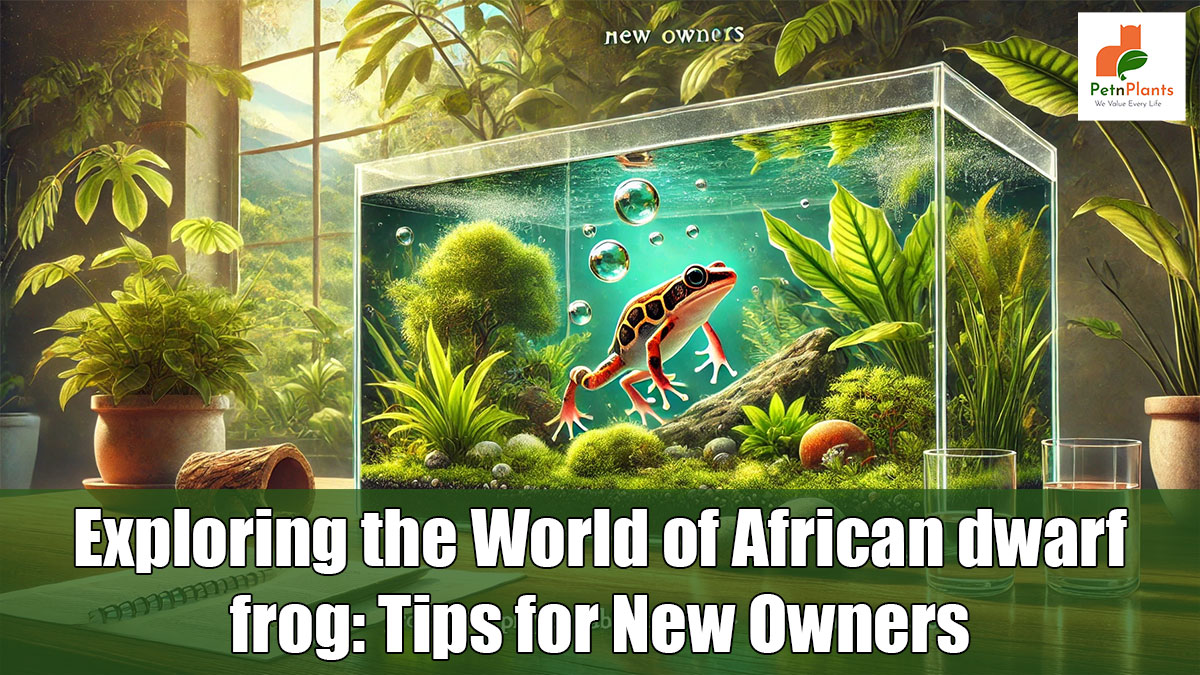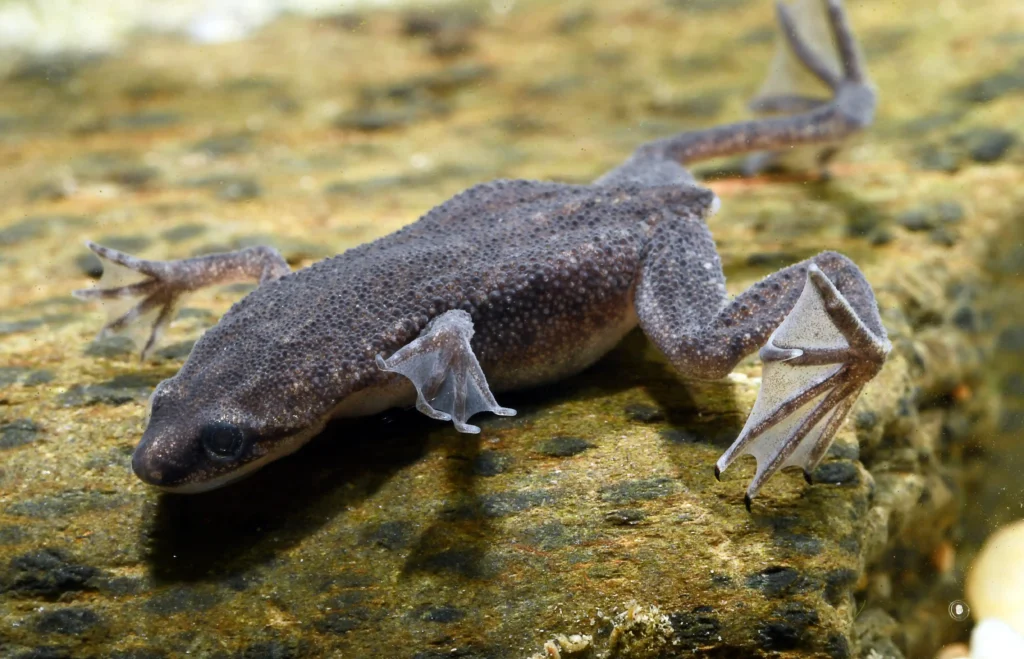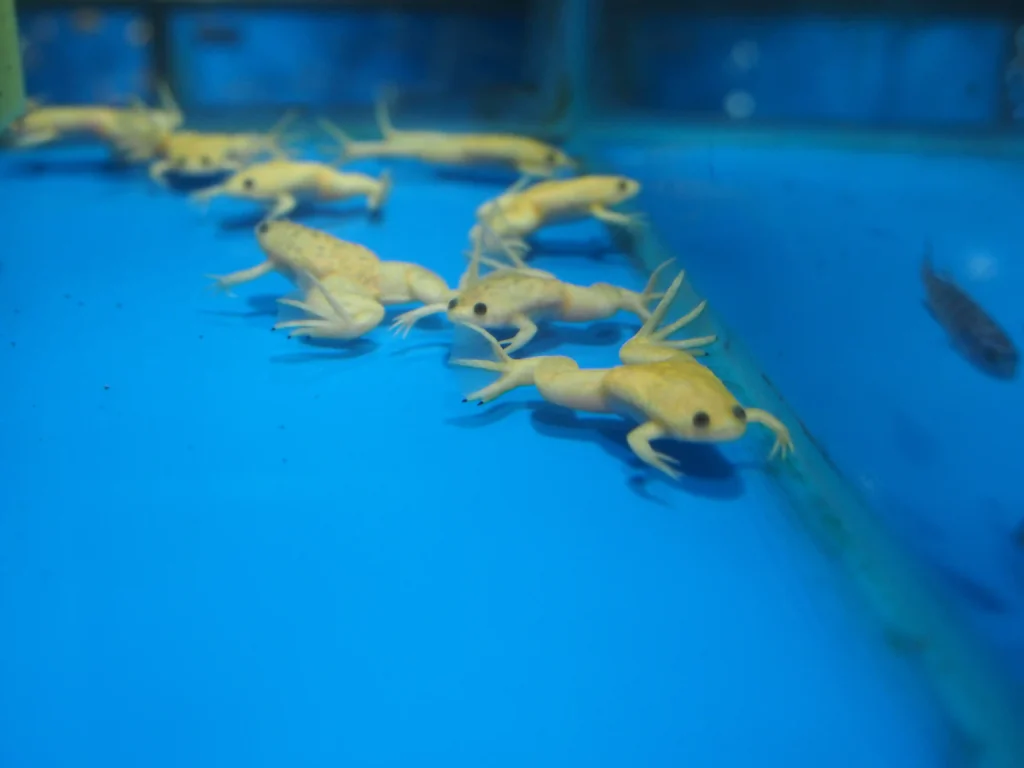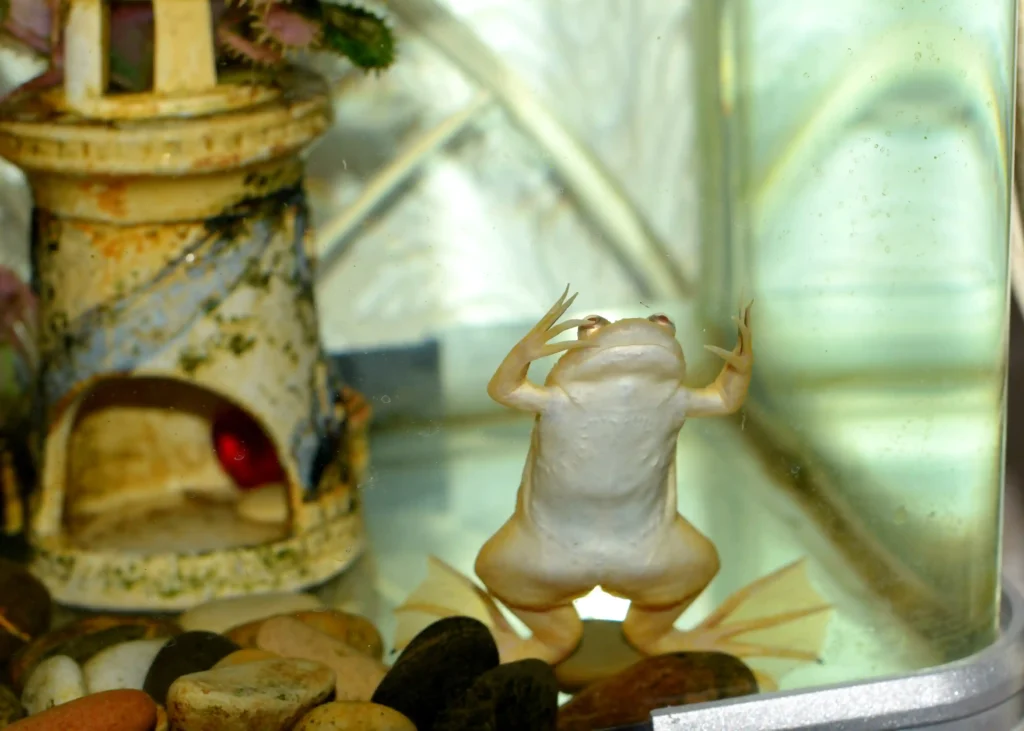How To
Latest
Pet Care
How to Groom Your Dog at Home with the Right Dog Grooming KitMarch 19, 2025
We Value Every Life

The word frog conjures images of enormous, verdant amphibians with bulging eyes leaping through the grass. Before we started keeping African dwarf frogs, that’s what we thought frogs looked like. Despite being a popular pet item for 40 years, these unusual and interesting amphibians are still not as well-known as toads, bullfrogs, or treefrogs. Anyone thinking about adopting an african dwarf frog and wanting to make sure it has all it needs to live a long, healthy life will find some useful information here.
The African dwarf frog was first found in Central African rivers, streams, puddles, and shallow ponds in the late 19th century. It is a member of the Hymenochirus genus of aquatic frogs and looks very similar to the African clawed frogs, which are also in its group. However, beginner amphibian keepers should be aware that these two species, although closely related, have distinct physical and behavioral characteristics.
You can tell a male African dwarf frog from a female by looking for a few telltale signs. Upon maturation, male African dwarf frogs tend to shrink in stature, acquire tiny glands known as post-axillary subdermal glands, have a diminutive tail, and emit a raucous “buzz” when agitated or attempting to woo a potential mate. Compared to males, females grow bigger, take on a pear form, get longer tails, and don’t buzz. Nighttime is usually when you’ll hear the most buzzing from the males. Little frogs of Africa are active at night. Living in nature, they sleep during the day and search for food at night.

The number of african dwarf frog you intend to keep as pets dictates the optimal size of aquarium for their care. One African dwarf frog needs a 2.5-gallon aquarium since they are so tiny—they can only reach a maximum size of 3 inches. Two fish should be housed in a 5-gallon aquarium, and any number of fish beyond that should be placed in a 10- to 20-gallon aquarium. Despite spending all their time in the water, African dwarf frogs must sometimes surface to breathe air since they have lungs. They have trouble swimming in deep water due of their webbed feet. If your aquarium is deeper than 12 inches, you should not put them in it. They risk drowning if their tank is too deep and they can’t get to the top to breathe.
As with all herps, maintaining a proper living environment for your African dwarf frog is key to preventing stress, disease and a shortened life. For optimal living space setup and maintenance, the following suggestions are recommended:


Specialized aquatic frog sinking pellets, freeze-dried bloodworms, frozen brine shrimp, daphnia, and live blackworms are all part of a healthy diet for an African dwarf frog. Dwarf frogs in Africa depend on their other senses—smell and touch—to find food because they can’t see well. They need their food broken up into little pieces and given in small portions because they don’t have teeth or tongues to aid with chewing.
Inside the aquarium, on a ceramic terra cotta dish, or with a pair of tweezers, you can feed them. They should have their food dropped in front of them so they may utilize their sense of smell and touch to discover it more quickly because their vision is so bad. In their natural environments, they forage for food in the evening, so that’s when you should feed them. Because of their small stomachs, it is important to feed them once or twice daily to ensure proper digestion. As quickly as possible, remove any remaining food from the aquarium so that the water does not become contaminated. Stress, illness, and an overabundance of waste in the water could result from overfeeding.
Be careful to check the nutrition facts labels before buying food. Not only should it contain 40-50 percent protein, but it should also be specifically designed for aquatic frogs.
Knowing whether an African dwarf frog is healthy or sick is essential when shopping for one and caring for it in an aquarium. When an African dwarf frog is in good health, you should see:
African dwarf frogs, when given the right environment and care, have a lifespan of five to ten years. A few live for ten to fifteen years.
The average African dwarf frog sheds its skin 2-4 times monthly. Their bodies will seem white before they molt. There are several reasons why African dwarf frogs expel their skin. The primary cause is associated with the way they naturally mature. What happens is that they eat their waste, which is a sign that they are making up for the nutrients they lost when they shed. You can safely leave the shed in the aquarium because it is normal. Fungal infections, bad water quality, or extreme changes to water parameters are some unhealthy reasons they could shed. Keep this in mind whenever you change the water, feed the frog, or put in new decorations or substrates for the tank.
An issue with the water’s quality may be at play if they shed more frequently than once every few days. A white, nearly intact shedding is an indicator of a healthy shed. It will be discolored and come off in small flakes if your shedding is unhealthy. Getting the unhealthy shed off might be a challenge for frogs at times. The inability of the frog’s skin to revert to its original dark hue after shedding is another indicator of unhealthy shedding. Your sick frog will still have a white appearance all over its body.
The experience of keeping african dwarf frog is one of a kind and educational for those who love the water. With the right conditions, food, and friends, you can keep these fascinating amphibians (like turtles) in your home aquarium and enjoy their vivacious antics and peaceful presence. With the excitement and intrigue that comes from caring for these charming critters, aquarists that embrace the care of African Dwarf Frogs will appreciate them as cherished additions to any aquatic environment.
Pet N Plants, a passionate group of authors who are devoted pet and nature enthusiasts. With over 15 years of experience in pet and plant care, our authors bring a wealth of knowledge and a deep love for all things flora and fauna. Each member of our team is dedicated to sharing insightful tips, detailed care guides, and the latest trends to help you nurture your beloved pets and plants. Whether you're a seasoned gardener or a pet parent, our experts are here to support your journey in creating a thriving, vibrant home environment for all your living companions.
0